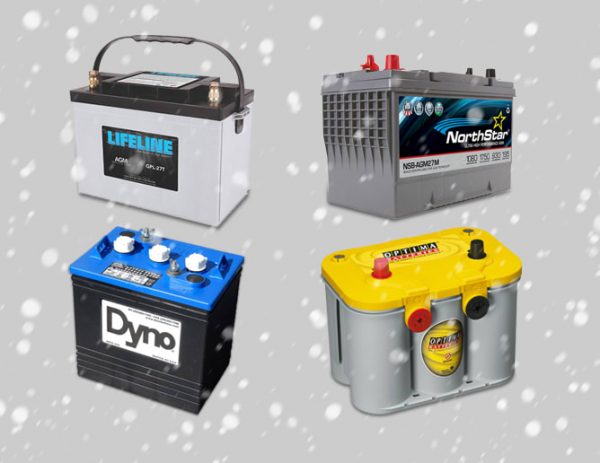Hello all Grand Banks Owners,
Thank you for inviting me to speak at your Rendezvous this past September. If you missed it, I’m happy to send the notes from my presentation. With winter near, I thought I’d give a few quick tips to help those of you who have either wet, lead-acid batteries or Absorbed Glass Mat (AGM) batteries. So please put on your safety glasses and a pair of nitrile gloves and let’s get to it. This should only take about 20-30 minutes and a few basic tools.

Tools: Combination (or adjustable) wrench for loosening the nuts on the cable terminal bolts, wire brush and a wire terminal cleaner (one that cleans inside the cable end and fits over the battery terminal), Digital Volt Meter (DVM), electrolyte hydrometer; a gallon of distilled water and a damp yellow microfiber rag for cleanup.
- Loosen and remove cable ends to check for and remove any corrosion on your battery terminals. Even AGM batteries can develop corrosion because acid may wick from the battery up through the POS terminal to settle between your battery post and cable terminal. If you discover even a small bit of blue-green or white corrosion, remove the cable end from the battery and clean it away with a wire brush.
- If you have terminal protection goop, check to see if it’s “di-electric” type. This type is NOT good to have between the terminal and the cable end as it is mostly silicone which acts as an insulator. Best practice is to clean your battery and cable terminals so they are CLEAN. Reassemble them, metal to metal, tighten everything. THEN you can smear a light coating of battery protection goop. Other spray-on types of battery protectant material, or smear-on types, are fine when applied sparingly and after everything is tight and done. Keep in mind that you are only trying to keep the hydrogen gas off the metal, not decorate a cake! 😉
- Check your electrolyte levels with a hydrometer (clearly, not possible with AGM models). If you have enough fluid to suck up into the hydrometer, then you probably have enough fluid in the cell that is above the plates. You should have about 3/8” to ½” deep electrolyte above the plates in your battery.
Batteries are low on Charge? Add just enough to cover the plates before you charge them. The level will rise when you charge them so be sparing. When they are fully charged, add just enough more distilled water to get that 3/8” to ½” of electrolyte above the plates.
Batteries fully charged? You only need to add enough distilled water to get that 3/8” to ½” level. - Your fully charged batteries at rest (not influenced by your charger having been ON for at least 6 hours) should indicate about 12.6-12.7 volts on your digital volt meter or 1.265 to 1.275 specific gravity reading on your hydrometer. AGM batteries’ voltage should be slightly higher at 12.7 to 12.8v.
- If all is clean and protected, and your batteries are being charged at 13.2v DC (for wet, lead-acid) and 13.4v DC for AGM batteries, then you are all set for the winter PROVIDED you either set your charger (or inverter) to periodically discharge your batteries (say, 2x per month) down to 12.1 volts, or you make a promise to yourself to go boating and accomplish the same thing. Enjoy the winter and let me know if you have any questions or concerns.
Best regards,
Steve Ahmann, President
Pacific Power Batteries
https://www.pacificpowerbatteries.com/